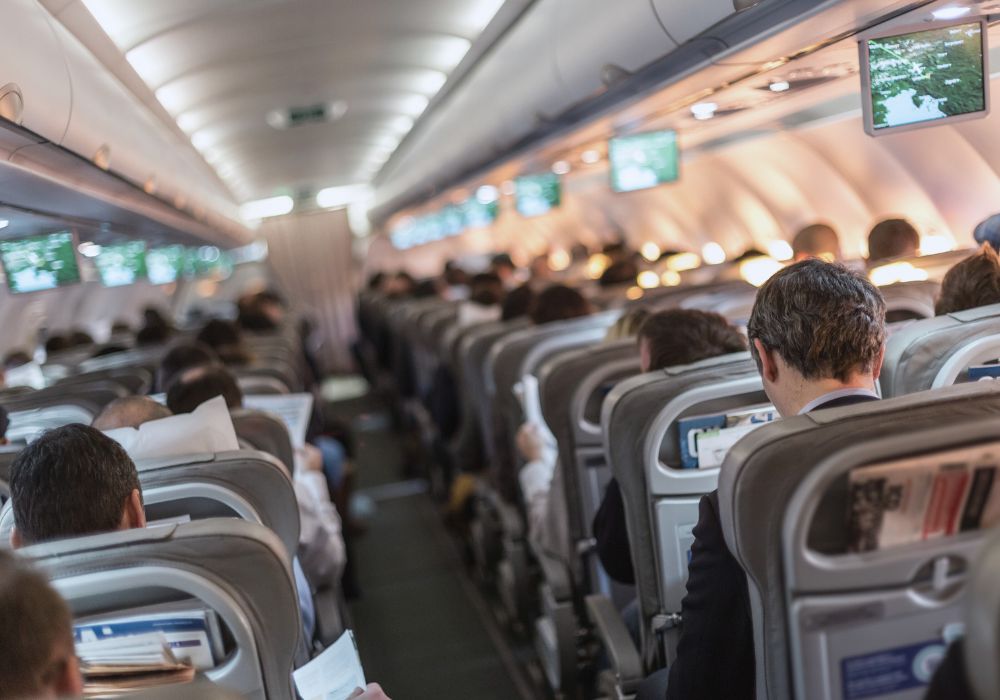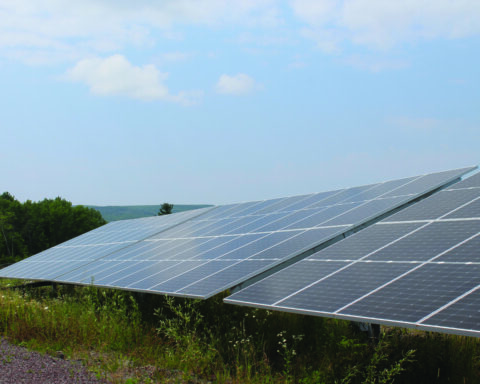In July, the aviation analytics firm Cirium released its ranking of the top 100 global airlines for carbon dioxide emissions, and the list includes a telling detail: the top performers are all budget airlines.
The reason that discount airlines tend to rank higher is hard to celebrate, even for the most climate-conscious travellers. While other factors contribute meaningfully to reducing emissions, low-cost airlines perform best because they tend to squeeze more people onto their planes.
Cirium’s analysis shows that increasing the number of passengers is currently the number-one way to decrease the carbon intensity of flying. Densely packed planes have lower per-passenger carbon emissions for the same reason that carpooling is a climate solution. By the same token, flying business class triples the carbon intensity of plane travel compared to economy seats.
“Airlines now face a genuine tension between passenger comfort and environmental performance,” Mike Malik, Cirium’s chief marketing officer, said at a presentation for journalists.
Closer quarters aren’t the only reason budget airlines perform better on emissions intensity. Low-cost carriers also tend to use newer airplanes with better fuel efficiency. “Seat density and fleet age matter more than almost any other factor airlines can control,” Malik wrote in the report.
“Because they want to be efficient, they renew their fleets more often,” says Olivier Paillot, general manager for the Americas at OpenAirlines, a software company that specializes in fuel savings. “OpenAirlines has 80 airlines using our solution, and of those, the low-cost airlines are by far the most efficient.”
The intricate path to emissions reductions
To calculate carbon intensity, Cirium uses a metric called “available seat kilometres” (ASK), which multiplies the number of available seats by the distance travelled. By this measurement, Wizz Air of Hungary takes top spot in the global ranking with 53.9 grams of carbon dioxide per ASK. Frontier Airlines in the United States came second, followed by Pegasus in Turkey.
Looking only at the world largest airlines, Ireland’s Ryanair was number one, with an ASK of 63. Southwest Airlines and Delta Airlines were second and third in this category, at 68.9 and 74.4 respectively.
Canada’s most carbon-efficient carrier is Flair Airlines with an ASK of 55.5. WestJet’s is 65.4, and Air Canada’s is 68.1.
RELATED
As air travel booms, can the aviation industry decarbonize for real?
Report says big companies are doing carbon removal all wrong
How subsidized leasing can drive EV adoption
Cirium uses a modelling tool called Emerald Sky to calculate airline emissions, which draws on a wide variety of data about aircraft design, passenger and cargo loads, flight operations and more. Emerald Sky is accredited by the Rocky Mountain Institute under the Pegasus Guidelines, an emissions measurement and reporting standard for the aviation sector. The comparisons are validated for use by banks and financiers for net-zero-aligned investing strategies.
There are other ways that airlines can effectively bring down their emissions, such as by making subtle adjustments to flight operations. OpenAirlines shows airlines how to find small efficiencies that together add up to larger savings, such as by adjusting how the plane ascends and descends, turning off one engine after the plane has landed, removing magazines and screens to eliminate weight, and more. Altogether, Paillot says the company can help airlines achieve up to a 5% reduction in fuel consumption.
Operational efficiencies are the fastest and easiest to deploy, Paillot says: “The fuel that’s saved, it’s saved today.”
Notably, the use of sustainable aviation fuels, or SAFs, was not a distinguishing factor in the Cirium ranking, because they currently account for only 0.53% of fuel demand. Even so, the International Air Transport Association’s plan to reach net-zero carbon emissions relies heavily on SAFs. According to the resolution passed in 2021, advanced biofuels and other alternative fuels are supposed to contribute 65% of the reductions in emissions by 2050.
Mark Mann is the associate editor at Corporate Knights. He is based in Montreal.
The Weekly Roundup
Get all our stories in one place, every Wednesday at noon EST.







